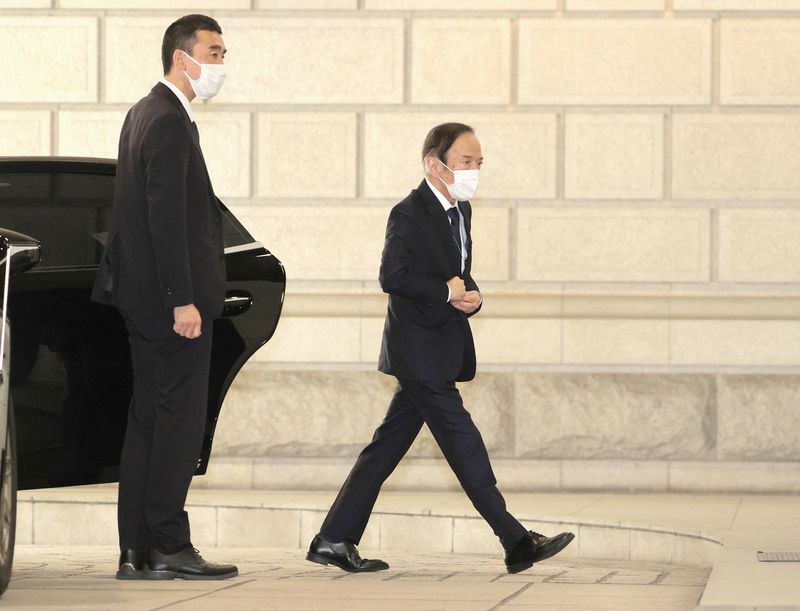By Leika Kihara
TOKYO (Reuters) - New Bank of Japan Governor Kazuo Ueda's main challenge will be to phase out its controversial yield curve control policy, which has come under criticism for distorting markets by keeping long-term interest rates from rising.
Ueda, who took office on Sunday, chairs his first policy meeting on April 27-28. In parliamentary hearings in February, Ueda stressed the need to maintain ultra-low interest rates, but said he had ideas on how to exit the bank's massive stimulus.
Here are options the BOJ could take to change its yield curve control (YCC) policy, which applies a minus 0.1% rate to some funds parked with the central bank and targets the 10-year government bond yield in a range around zero.
ABANDON YIELD TARGET
A leadership transition gives the new governor a chance to overhaul his predecessor's policy. If Ueda wants to show his resolve for change, he could act fairly soon, some analysts say.
Ueda has said YCC was unsuited for minor fine-tuning, suggesting that he could abandon the 10-year yield cap and shift to a policy solely targeting short-term interest rates.
In doing so, the BOJ can soothe markets by pledging to buy as many bonds as needed to fend off an abrupt spike in yields.
WIDEN YIELD BAND, SHORTEN YIELD TARGET
If Ueda feels abandoning the yield cap could be too risky given the impact on the cost of funding Japan's huge debt, the BOJ may take a more modest approach.
One idea would be to widen the band set around the 10-year yield target, now set at 50 basis points on either side. Doing so could alleviate market distortions by allowing yields to move more freely.
Another option would be to target shorter-duration bond yields such as the five-year zone, to allow the longer end of the curve to move more flexibly reflecting economic fundamentals.
DROP HINTS OF FUTURE TWEAKS
If Ueda wants to spend time debating the specifics of a policy tweak, he could start by dropping signals of a possible future tweak in his news conferences or speeches.
The BOJ could also drop signs by tweaking its guidance that pledges to keep interest rates at "current or lower" levels, to one that takes a more neutral view on the rate outlook.
When the BOJ shifted to YCC from a policy targeting the pace of money printing, it used a thorough analysis of its policy framework to justify the shift. Ueda may opt to do the same if the BOJ were to overhaul the current framework.
DO NOTHING, FOR NOW
With less than three weeks until the April 27-28 meeting, Ueda may not have enough time to debate with his fellow board members on how and when the BOJ should tweak YCC.
That heightens the chance the BOJ will stand pat at least until the subsequent meetings on June 15-16 or July 27-28.
Waiting will allow Ueda to build consensus within the board on the preferred next step, and strategise with staff on how best to communicate the BOJ's policy intention to markets.
It will also give the BOJ time to assess whether wage hikes will continue through next year. In judging this, the outlook for global growth is crucial including whether the U.S. Federal Reserve will keep raising rates or pause.
END NEGATIVE RATE
The BOJ could abandon the 0.1% charge it applies for a small pool of excess reserves financial institutions park with the central bank. After ditching that negative rate, the BOJ could start paying interest on excess reserves to mop up liquidity from the economy.
The BOJ only aims to take such a step when it deems Japan's economy has achieved a positive cycle, in which rising prices generates higher pay that gives households more purchasing power.

Ending negative rates would ease the pain on commercial banks, which have seen their margins crushed by years of ultra-low rates. But it would also slow the economy by raising rates for bank lending and mortgage loans.
The BOJ will thus not want to rush to pull the trigger. Any such move would likely be accompanied by, or come well after, the end of the 10-year yield target.